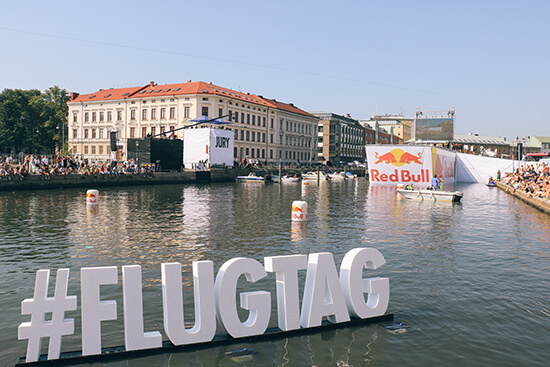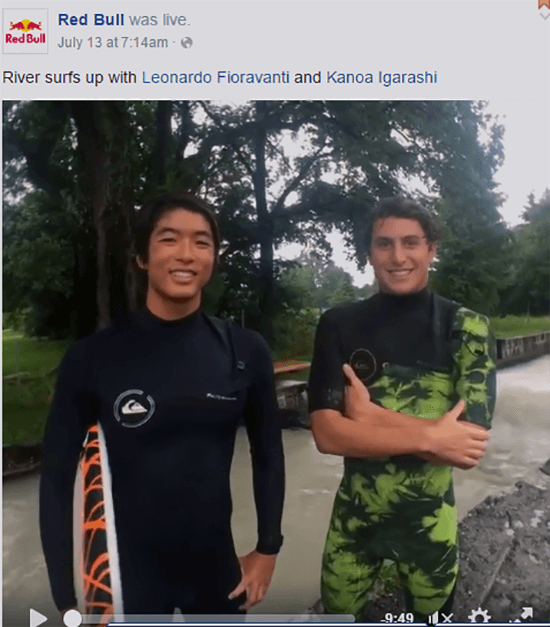
With all the data and technology available to marketers, it’s easy to focus on digital.
After all, email marketing alone has attracted 66 percent of online shoppers to make a purchase, and marketers give it the highest ranking as a marketing, conversion, and retention tactic.
Then there’s social media.
It can be tough to prove ROI, but the ease with which you can get your brand in front of consumers is incredible.
What are you emailing about?
What are you tweeting about?
What’s showing up in your Facebook feed and in your Vine videos?
Are you all dressed up with nowhere to go?
Experiential marketing solves that problem.
It immerses people in the emotional vitality of a flesh-and-blood experience.
Thanks to tools such as email, social media, and websites, you can use the experience to take your brand to a whole other level.
Experiential Marketing and Brand Activation
According to experiential marketing expert Matthew Kinsman:
Brand activation is essentially the process of making a brand well-known and loved by consumers, by promoting it in an experience-based way that generates interest, allowing consumers to experience the brand.
Activating and marketing your brand in an experience-based way involves multiple channels.
Kinsman gives the example of creating a mini-site dedicated to a specific product.
With experiential marketing, you would create a physical experience with the product and point your audience to the dedicated mini-site.
Digital channels, such as a mini-site, go towards reinforcing the experience and expanding upon it.
Then, these channels funnel the user to a conversion.
What, exactly, does a brand experience look like?
The Event
One direct way to create a brand experience is through an event.
It’s effective.
A study from Momentum Worldwide showed live events drive 65 percent of people to recommend brands, and 59 percent of people to buy afterwards.
Live events come with their own set of challenges.
For one, you have to make sure people know about it.
Here are some quick tips on how to market events:
- Social: Create an event page on Facebook and a Twitter hashtag for the event.
- Email: Tap into your email list.
- Special occasions: Tie your event into a holiday or other occasion.
- Signage: Craft posters and flyers to throw up around town.
- Locality: Invite local businesses.
- Timing: Give people plenty of advance notice via email and social media.
You’ll also want to notify traditional media channels, and there’s nothing wrong with creating a dedicated event website.
Now let’s look at an example and discuss corresponding digital action.
Red Bull Events
Red Bull has taken the event experience and made it the brand’s signature.
Just look at the variety of events here.
They’re doing everything from a lifeguarding competition to a grand prix to festivals.
For Red Bull, the nature of these events fits the brand’s active and extreme image.
Think carefully about the brand image you want to project.
The events you host or sponsor will work best if they’re relevant to your niche and personality.
If the event is relevant to your product’s purpose, people will experience your brand in a very real way.
They’ll identify activity, the flesh-and-blood engagement, with your brand.
Website and Social Media
Red Bull has a dedicated events website that does the following well:
- Provides event-related images.
- Provides detailed event information and links.
- Provides news content related to events.
- Provides a streaming video component (Red Bull TV).
- Provides product info and shopping portals.
Note the overt focus here is the events, not the brand.
People come away with a brand impression by association.
Meanwhile, you have links to all the major social media channels at the bottom of each page.
If I go to the Facebook page, the first piece of content I see is a video that was originally a livestream:

This reinforces their brand image, and it takes advantage of the streaming video option on Facebook.
Facebook Live video is more likely to appear higher in News Feed than other types of content.
The events calendar is easy to access on the left-hand sidebar.
You also have easy access to the Red Bull main website.
The brand is fully activated and marketed through the events, website, and social media.
Bringing It Home
Like the Mountain Dew Energy Tour, you can choose to make your brand experience interactive and disruptive, taking your product to the community.
Or, like the Anheuser-Busch virtual tour, you can use technology to immerse people in what you do.
What types of experiences can you think of for your brand?
Whatever you choose, create corresponding brand activation points online, through social media, your website, and email.
The experience will earn you recommendations, the digital channels, conversions.
What more could you ask for?
image credit: shutterstock